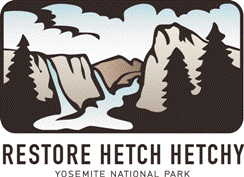Officials in San Francisco have stated they want to meet 100% of their electrical demand with renewable power within a decade (see New York Times article). It is a laudable goal, but to reach it they would have to classify their generation from large hydroelectric plants as “renewable”, something disallowed by State regulations.
Essentially they want special treatment that is different from other California utilities. They want a double standard.
Let’s be clear. San Francisco has made important progress on the energy front. They have invested substantially in solar power and energy conservation. And after a long struggle, they have recently shut down their last in-city fossil fuel plant on Potrero Hill.
But they would like to count the hydropower they generate in the Sierra Nevada at three sites – Moccasin & Kirkwood along the Tuolumne River and Holm on nearby Cherry Creek - as renewable. No other utility in California is allowed to classify hydropower facilities over 30 megawatts in size as renewable, and San Francisco should be no exception.
The debate over how to classify hydropower in California arose several years ago during the discussion of how to apply a “Renewable Portfolio Standard” to require utilities to generate more environmentally friendly power over time. The role of hydropower was debated. Some insisted that hydropower emits no pollutants and is in a sense “renewable”. Others argued that hydropower facilities have devastated fisheries and ruined rivers, so they should not be included. The compromise (albeit imperfect) was to classify any facility over 30 MW as ”non-renewable” and any facility under 30 MW as “renewable”. This compromise has been accepted by all, except apparently by some officials in San Francisco.
Of course, this is not the first time that a double standard would apply to San Francisco. They are after all the only water agency allowed to operate a major reservoir in a National Park. But in addition to continuing to store water in Hetch Hetchy Valley and deny generations of Americans the opportunity to appreciate its splendors, they want special dispensation in how they classify the hydropower generation from the project.
For those who have not followed the effort to restore Hetch Hetchy Valley in Yosemite National Park, it worth knowing that removing the dam or simply draining the reservoir would diminish the amount of water delivered to the Bay Area by only about 4% and the amount of hydropower generated at the 3 plants by 20% - see reports by Environmental Defense Fund, UC Davis, Restore Hetch Hetchy and others. Replacing these resources would be challenging but is eminently doable and well worth the effort to make Hetch Hetchy Valley and Yosemite National Park whole once again.
Let’s tell San Francisco to play by the same rules as everyone else.
Tuesday, January 4, 2011
Subscribe to:
Post Comments (Atom)

No comments:
Post a Comment